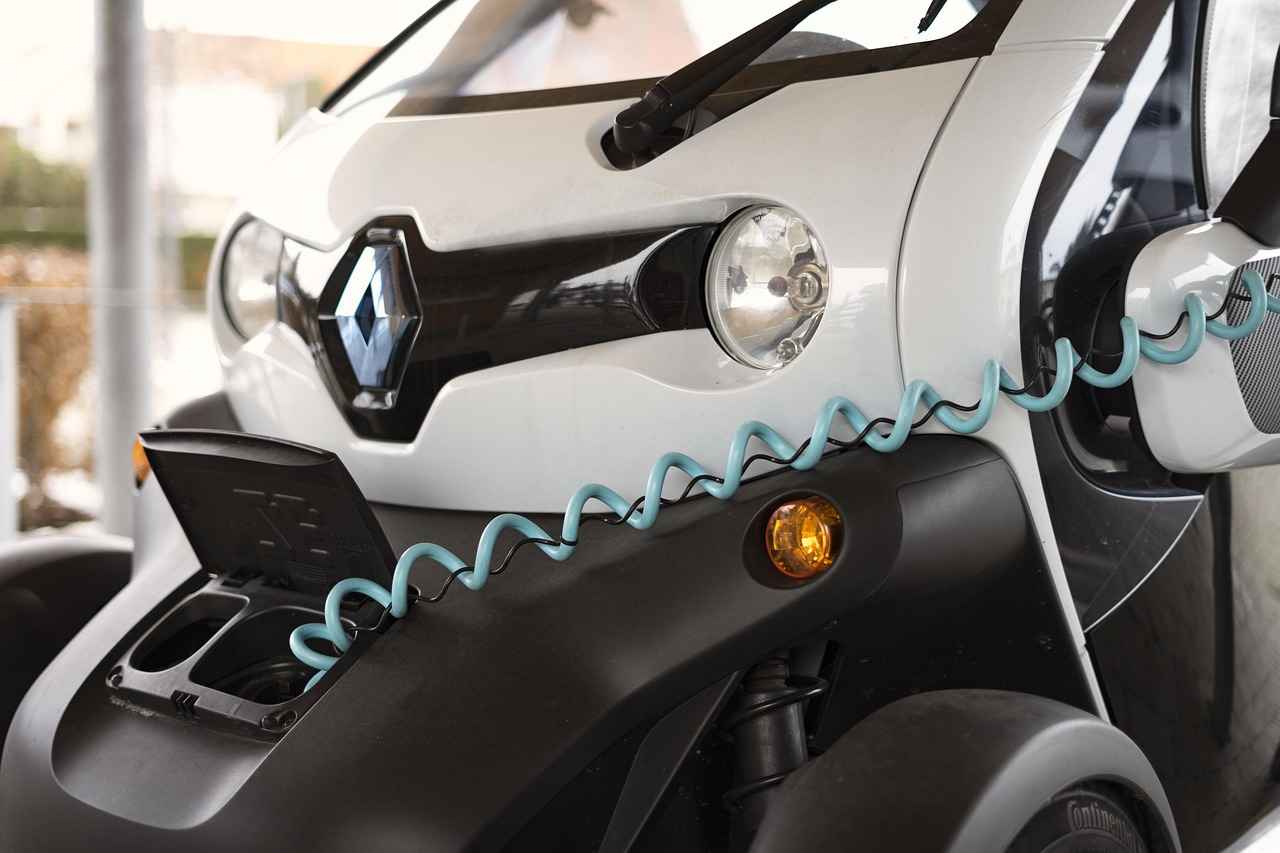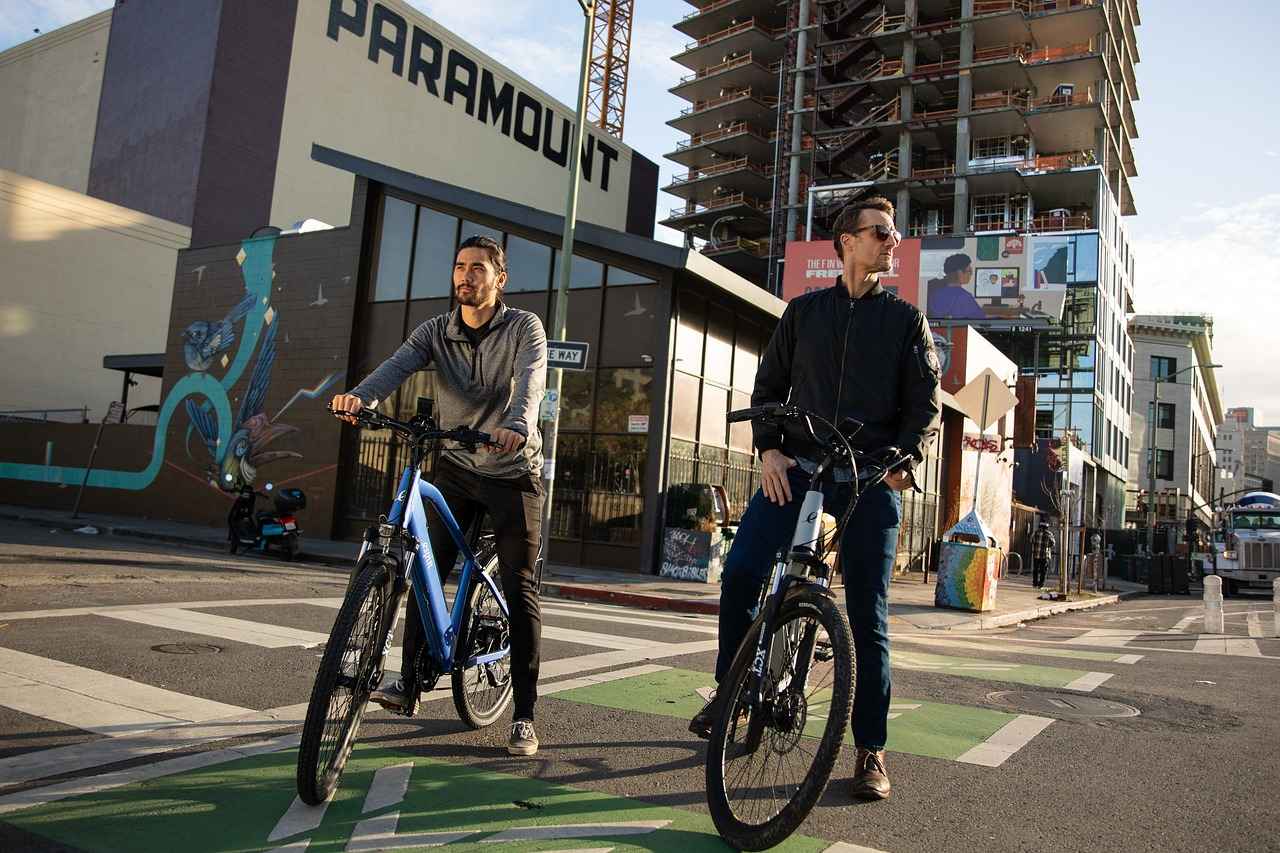This article provides essential tips and insights to maximize your electric bike’s battery life, ensuring longer rides and better performance while maintaining the health of your battery.
Understanding Electric Bike Batteries
Electric bike batteries are crucial for performance. Familiarizing yourself with their types, capacities, and functionalities can help you make informed decisions to enhance your biking experience.
Factors Affecting Battery Life
- Terrain: Different terrains can drain your battery at varying rates. Riding uphill or on rough surfaces typically requires more energy, affecting overall battery longevity.
- Rider Weight: Heavier riders may experience reduced battery life compared to lighter riders.
- Riding Style: Aggressive acceleration and high speeds can lead to faster battery depletion.
Best Practices for Charging Your Battery
- Optimal Charging Times: Charge your battery before it completely drains. Regular partial charges can be beneficial.
- Using the Right Charger: Always use the manufacturer-recommended charger to ensure compatibility and safety.
Maintaining Your Battery for Longevity
- Storage Conditions: Store your battery in a cool, dry place to maintain its health. Extreme temperatures can negatively impact performance.
- Regular Inspections: Conduct inspections of your battery and bike to identify issues early, ensuring optimal performance.
Upgrading Your Battery
- Choosing the Right Battery Type: Select a battery that fits your bike’s specifications and your riding needs for maximum efficiency.
- Cost vs. Benefit Analysis: Evaluate the cost of a new battery against the benefits it provides for an informed decision.
Conclusion: Maximizing Your Electric Bike Experience
By understanding battery dynamics and implementing best practices, you can significantly enhance your electric bike’s performance and longevity, ensuring enjoyable rides for years to come.

Understanding Electric Bike Batteries
Electric bike batteries play a critical role in determining the overall performance and efficiency of your ride. These batteries are not just power sources; they significantly influence the distance you can travel, the speed at which you can ride, and even the overall experience of biking. By familiarizing yourself with the different types of electric bike batteries, their capacities, and functionalities, you can make informed decisions that enhance your biking adventures.
Types of Electric Bike Batteries
- Lithium-ion Batteries: These are the most common type of batteries used in electric bikes due to their lightweight nature and high energy density.
- Lead-acid Batteries: Although heavier and less efficient, they are often found in more affordable electric bikes.
- Nickel-metal Hydride Batteries: These batteries offer a good balance between performance and cost but are less common in modern e-bikes.
Battery Capacities Explained
The capacity of an electric bike battery is measured in amp-hours (Ah) or watt-hours (Wh). A higher capacity means a longer range, allowing you to ride further without needing to recharge. For instance, a battery with a capacity of 500Wh can provide more power and longer rides compared to a 250Wh battery.
Functionalities of Electric Bike Batteries
Understanding the functionalities of your electric bike battery can help you optimize your riding experience. Key functionalities include:
- Regenerative Braking: Some electric bikes can recharge their batteries while braking, extending battery life.
- Smart Battery Management Systems: These systems monitor battery health and performance, ensuring efficient energy usage.
In summary, by understanding the different types of electric bike batteries, their capacities, and functionalities, you can significantly improve your biking experience. Investing in the right battery not only enhances performance but also contributes to the longevity of your electric bike.

Factors Affecting Battery Life
The battery life of your electric bike is influenced by a variety of factors. Understanding these elements can significantly enhance the efficiency of your rides, allowing you to enjoy longer journeys without the constant worry of running out of power. Here, we explore the primary factors that affect battery life:
- Terrain: The type of terrain you ride on has a profound impact on battery consumption. For instance, hilly terrains require more energy due to the increased effort needed to ascend elevations, which can lead to quicker battery depletion. In contrast, flat surfaces generally allow for more efficient energy use.
- Rider Weight: The weight of the rider plays a critical role in how much energy the bike’s motor expends. Heavier riders may find that their battery drains faster compared to lighter individuals, as the motor must work harder to propel the added weight.
- Riding Style: Your personal riding habits can also influence battery life. For example, frequent acceleration and deceleration can lead to higher energy usage. Maintaining a steady pace and utilizing eco-mode settings can help conserve battery power.
- Weather Conditions: External factors such as wind resistance and temperature can affect battery performance. Riding against strong winds or in very cold weather can increase energy consumption, reducing overall battery life.
By being aware of these factors and adjusting your riding habits accordingly, you can optimize your electric bike’s battery life, ensuring that you can enjoy longer and more efficient rides.
Terrain Impacts on Battery Performance
When it comes to electric bike performance, the terrain you ride on can have a significant impact on your battery life. Understanding how different surfaces and inclines affect your bike’s energy consumption can help you plan your rides more effectively.
- Uphill Riding: Climbing steep hills demands more power from your bike’s motor, which in turn drains the battery more quickly. The steeper the incline, the more energy required to maintain speed and balance.
- Rough Surfaces: Riding on uneven or bumpy terrain also increases battery usage. The motor has to work harder to stabilize the bike and provide a smooth ride, leading to faster battery depletion.
- Flat Terrain: Conversely, riding on flat surfaces generally consumes less battery power. This allows for longer rides without the constant need to recharge.
- Urban vs. Rural: Urban environments often involve frequent stops, starts, and acceleration, which can affect battery efficiency. In contrast, rural riding may offer more uninterrupted stretches, allowing for better battery performance.
To maximize your electric bike’s battery life, consider the following tips:
- Plan Your Route: Choose routes that minimize steep climbs and rough patches whenever possible.
- Adjust Your Riding Style: Maintain a steady pace and avoid rapid acceleration to conserve battery power.
- Monitor Battery Levels: Keep an eye on your battery level, especially when tackling challenging terrains.
By being aware of how different terrains impact your bike’s battery performance, you can make informed decisions that enhance your riding experience and extend the life of your electric bike’s battery.
Flat vs. Hilly Terrain
When it comes to electric biking, the terrain you choose to ride on can have a significant impact on your bike’s battery life. Understanding how different terrains affect energy consumption is essential for maximizing your riding experience.
On flat terrains, your electric bike generally consumes less battery power. This is due to the reduced need for additional energy to overcome gravity. Riders can maintain a steady pace with less effort, allowing the battery to last longer. Flat surfaces also enable the bike to operate in a more efficient manner, translating into extended ride times and less frequent charging.
In contrast, hilly terrains can dramatically reduce battery life. Climbing steep inclines requires significantly more energy, as the bike must work against the force of gravity. This increased energy demand can lead to quicker battery depletion, especially during extended periods of uphill riding. Riders may find themselves needing to recharge more often when traversing hilly landscapes, which can disrupt the overall biking experience.
Additionally, the impact of terrain on battery life can vary based on factors such as rider weight and riding style. Heavier riders may experience even greater battery drain on hilly paths compared to lighter riders. Understanding these dynamics allows cyclists to plan their routes and manage their energy consumption effectively.
In conclusion, while flat terrains offer a more battery-efficient riding experience, hilly terrains present challenges that require careful management of your electric bike’s power. By being aware of how terrain affects battery life, you can make informed decisions that enhance your electric biking adventures.
Urban vs. Rural Riding
When it comes to electric biking, the environment in which you ride can significantly affect your battery performance. Urban riding typically involves navigating through congested streets, which means frequent stops and starts at traffic lights and intersections. This constant acceleration and deceleration can lead to increased energy consumption, ultimately impacting your battery life. In contrast, rural riding often provides a more consistent flow, allowing for uninterrupted travel over longer distances.
In urban settings, the need to accelerate quickly to keep pace with traffic can cause the battery to drain faster. Each time you stop, the bike’s electric motor has to work harder to get you back up to speed, which can be taxing on the battery. Additionally, urban riders might find themselves using features like pedal assist more frequently to navigate through stop-and-go traffic, further straining battery resources.
On the other hand, rural riding usually involves longer stretches of road with fewer stops. Riders can maintain a steady speed, which is generally more efficient for battery usage. The energy required to sustain a constant pace is typically less than that needed for frequent acceleration. Furthermore, rural areas often have less elevation change compared to urban environments, which can also contribute to better battery longevity.
Ultimately, understanding these differences can help riders make informed choices about their routes and riding habits. For those who primarily ride in urban environments, it may be beneficial to plan routes that minimize stops or consider using a bike with a larger battery capacity to compensate for the increased energy demands. Conversely, rural riders can take advantage of the more efficient energy usage by enjoying longer rides without the constant need to recharge.
In conclusion, whether you are navigating city streets or exploring rural paths, being aware of how your riding environment affects your battery performance can help you maximize your electric bike experience.
Rider Weight Considerations
The impact of rider weight on electric bike battery consumption is a crucial factor that many riders may overlook. Understanding how weight affects battery life can help you make informed decisions for a more enjoyable riding experience.
How Rider Weight Affects Battery Performance
The weight of the rider directly influences the energy required for propulsion. Heavier riders typically demand more power from the battery, which can lead to reduced battery life compared to lighter riders. This is particularly evident during climbs or when accelerating, as the motor must work harder to move the additional weight.
- Energy Consumption: Every additional pound can increase the energy consumption of the bike. This means that heavier riders may need to recharge their batteries more frequently, affecting the overall range of the bike.
- Motor Strain: The motor experiences increased strain when moving heavier loads, which can lead to faster wear and tear, potentially shortening the lifespan of both the motor and the battery.
- Optimal Weight Range: Many electric bike manufacturers provide guidelines on the optimal rider weight range for their models. Staying within this range can help maximize battery efficiency.
Strategies for Heavier Riders
If you are a heavier rider, there are several strategies you can employ to mitigate battery consumption:
- Choose a bike with a higher capacity battery: Opting for a bike designed to support heavier weights can enhance performance.
- Adjust your riding style: Adopting a smoother riding style can help conserve battery life. Avoid sudden accelerations and maintain a steady pace.
- Utilize pedal assist wisely: Use lower assist levels when riding on flat terrain to save battery power for when you need it most.
In conclusion, understanding the relationship between rider weight and battery consumption is essential for optimizing your electric biking experience. By considering your weight and implementing effective strategies, you can enhance your bike’s performance and enjoy longer rides.

Best Practices for Charging Your Battery
Proper charging practices are essential for maximizing the lifespan and performance of your electric bike’s battery. By understanding the nuances of when and how to charge, you can significantly enhance your riding experience. Here are some important insights that can help you get the most out of your electric bike’s battery.
- Charge Regularly: It’s advisable to charge your battery regularly rather than waiting for it to completely deplete. Keeping your battery’s charge level between 20% and 80% is ideal for maintaining its health.
- Avoid Overcharging: Overcharging can lead to overheating, which may damage the battery. Always unplug the charger once the battery is fully charged.
- Use the Recommended Charger: Always use the charger provided by the manufacturer. Using third-party chargers can result in compatibility issues and potentially harm the battery.
- Charge in a Suitable Environment: Ideal charging conditions are crucial. Avoid charging your battery in extreme temperatures, whether too hot or too cold, as this can affect battery performance.
- Keep Connectors Clean: Regularly check and clean the battery connectors to ensure a good connection, which can help in efficient charging.
- Monitor Battery Health: Keep an eye on your battery’s performance. If you notice a significant drop in range or charging times, it may be time for a replacement.
By following these best practices, you can ensure that your electric bike’s battery remains in optimal condition, allowing for longer rides and improved performance. Proper care and attention to charging habits can lead to a more enjoyable biking experience.
Optimal Charging Times
are crucial for the longevity and performance of your electric bike’s battery. Understanding when and how to charge your battery can significantly impact its health and efficiency. Here are some key insights to help you maximize your battery life:
- Avoid Complete Drainage: It’s essential to avoid letting your battery completely drain before recharging. Doing so can lead to irreversible damage and reduce its overall lifespan. Instead, aim to recharge your battery when it reaches around 20-30% capacity.
- Frequent, Shallow Charges: Regularly charging your battery in smaller increments can be more beneficial than waiting for it to deplete. This practice helps maintain a healthy charge cycle, which is vital for lithium-ion batteries typically used in electric bikes.
- Timing Matters: Charging your battery during cooler parts of the day, such as early morning or late evening, can help maintain its health. High temperatures during charging can lead to overheating, which adversely affects battery performance.
- Use Smart Charging Techniques: Some electric bikes come with smart charging features that optimize the charging process. Make sure to utilize these features if available, as they can help prolong battery life.
- Monitor Battery Health: Regularly check the health and performance of your battery. Many bikes have apps or displays that provide insights into battery status, allowing you to adjust your charging habits accordingly.
By adhering to these practices, you can ensure that your electric bike’s battery remains in optimal condition, allowing for longer rides and enhanced performance. Remember, consistent care and attention to your battery’s charging habits can lead to a more enjoyable biking experience.
Using the Right Charger
When it comes to maintaining the health and longevity of your electric bike’s battery, one of the most critical factors is the charger you use. Always opt for the manufacturer-recommended charger to ensure compatibility and safety. Using the appropriate charger not only safeguards your battery from potential damage but also enhances its overall performance.
The right charger is designed specifically for your battery type, ensuring optimal charging rates and preventing overcharging or undercharging. This is vital because improper charging can lead to a decrease in battery capacity over time, ultimately affecting your bike’s range and efficiency.
Moreover, utilizing a charger that is not approved by the manufacturer can void warranties and lead to costly repairs. It is essential to recognize that different batteries have unique voltage and amperage requirements, and using a mismatched charger can result in serious safety hazards, including overheating or even fire.
Additionally, regularly inspecting your charger for any signs of wear or damage is a good practice. A frayed cord or a damaged plug can not only compromise charging efficiency but also pose a risk of electric shock. Always replace any damaged components immediately.
In summary, adhering to the manufacturer’s recommendations for chargers is crucial for the health of your electric bike’s battery. By doing so, you can prolong battery life, enhance performance, and ensure a safer riding experience.
For best results, consider the following tips:
- Use the charger that came with your bike or one recommended by the manufacturer.
- Avoid using chargers from different brands or models.
- Check the specifications of your charger to match your battery’s requirements.
- Inspect your charger regularly for any signs of damage.
By following these guidelines, you can maximize your electric bike’s battery performance and enjoy longer, more reliable rides.

Maintaining Your Battery for Longevity
Regular maintenance is crucial for extending your electric bike’s battery lifespan. Proper care can prevent premature wear and tear, ensuring that you get the most out of your investment. Here are some essential practices to follow:
- Routine Cleaning: Keeping your battery clean from dirt and grime can help maintain its performance. Use a damp cloth to wipe down the exterior, being careful not to let moisture seep into any openings.
- Check Connections: Regularly inspect the battery connections for any signs of corrosion or damage. Tighten loose connections to ensure optimal power transfer.
- Monitor Performance: Keep an eye on how your battery performs over time. If you notice a significant drop in range or power, it may be time for a professional inspection.
Storage Conditions
Storing your battery in ideal conditions is essential for its longevity. Here are some tips:
- Temperature Control: Always store your battery in a cool, dry place. Avoid exposing it to extreme temperatures, as this can lead to decreased performance and lifespan.
- Partial Charge Storage: If you plan to store your bike for an extended period, keep the battery at around 50% charge. This level helps to maintain the health of the battery.
Regular Inspections
Conducting regular inspections of your battery can help identify issues before they become serious problems. Check for:
- Physical damage or swelling of the battery casing.
- Unusual heat during charging or discharging.
- Any signs of leakage or unusual odors.
By following these maintenance tips, you can significantly enhance the longevity of your electric bike’s battery, ensuring that you enjoy many more rides without the worry of battery failure.
Storage Conditions
When it comes to maintaining the health of your electric bike’s battery, play a crucial role. Properly storing your battery can significantly enhance its lifespan and performance. Here are some key considerations:
- Cool Temperatures: It is essential to store your battery in a cool environment. Ideally, temperatures should be between 50°F and 77°F (10°C to 25°C). Extreme heat can lead to a decrease in battery capacity, while extreme cold can cause the battery to lose its charge more quickly.
- Dry Environment: Moisture can damage battery components and lead to corrosion. Always ensure that the storage area is dry and well-ventilated to prevent moisture buildup.
- Avoid Direct Sunlight: Prolonged exposure to direct sunlight can raise the temperature of your battery, potentially causing thermal runaway, which can be dangerous. Store the battery in a shaded area or indoors.
- Charge Level: Before storing your battery for an extended period, charge it to about 50% to 70%. This charge level helps to maintain battery health during storage and prevents it from entering a deep discharge state.
In summary, taking the time to store your electric bike battery in a cool, dry place can greatly enhance its longevity and performance. Avoiding extreme temperatures and moisture will ensure that your battery remains in optimal condition for your next ride.
Regular Inspections
of your electric bike and its battery are crucial for ensuring optimal performance and longevity. Many riders underestimate the importance of routine checks, but these inspections can help identify potential issues before they escalate into serious problems. By taking the time to conduct these evaluations, you not only enhance your riding experience but also extend the life of your bike and battery.
During a regular inspection, consider the following key areas:
- Battery Condition: Check for any signs of wear, corrosion, or damage. Look for swelling or leakage, which can indicate a failing battery.
- Connections and Wiring: Ensure that all connections are secure and free from corrosion. Loose or damaged wiring can lead to power loss or safety hazards.
- Tire Pressure: Properly inflated tires are essential for efficient battery usage. Low tire pressure can increase resistance and drain the battery faster.
- Brakes and Gears: Inspect the brake system and gears for smooth operation. Malfunctioning components can lead to increased strain on the battery.
Additionally, keeping a maintenance log can be beneficial. Documenting your inspections helps you track any recurring issues and stay on top of necessary repairs. This proactive approach not only saves you from unexpected breakdowns but also contributes to a safer riding experience.
Remember, conducting regular inspections is not just about maintaining your bike; it’s an investment in your overall riding enjoyment. By ensuring everything is in top shape, you can focus on the thrill of the ride without worrying about potential mechanical failures.
In conclusion, integrating regular inspections into your maintenance routine is a simple yet effective way to safeguard your electric bike’s performance and longevity. Make it a habit, and you will reap the benefits of a well-maintained bike for years to come.

Upgrading Your Battery
Upgrading to a higher capacity battery for your electric bike can significantly enhance its overall performance and riding experience. When considering a battery upgrade, it is essential to understand the various options available and how they can impact your electric bike’s functionality.
Benefits of a Higher Capacity Battery
- Extended Range: A higher capacity battery allows for longer rides without the need for frequent recharging, making it ideal for long-distance cycling enthusiasts.
- Improved Performance: With more power available, your bike can handle steep inclines and rough terrains more efficiently, providing a smoother ride.
- Enhanced Durability: Higher capacity batteries often come with better technology, which can lead to improved longevity and reduced wear over time.
Choosing the Right Battery Type
When selecting a new battery, it is crucial to consider the following:
- Compatibility: Ensure that the new battery is compatible with your electric bike’s motor and electrical system.
- Voltage and Amp Hours: Look for batteries with higher voltage and amp-hour ratings to maximize performance.
- Weight Considerations: A heavier battery may affect your bike’s handling, so find a balance between capacity and weight.
Cost vs. Benefit Analysis
Before making a purchase, evaluate the cost of the new battery against the benefits it offers. Consider the following:
- Initial Investment: Higher capacity batteries may have a higher upfront cost, but they can save you money in the long run through fewer replacements and better performance.
- Potential Savings: Longer battery life can reduce the frequency of charging, leading to lower electricity costs.
By understanding the advantages of upgrading your battery and carefully selecting the right type, you can enhance your electric biking experience, ensuring more enjoyable and efficient rides.
Choosing the Right Battery Type
for your electric bike is an essential step towards achieving optimal performance and efficiency. Selecting a battery that meets both your bike’s specifications and your personal riding needs can significantly enhance your overall biking experience.
When considering a battery, it’s important to understand the different types available. Most electric bikes utilize lithium-ion batteries, known for their lightweight design and high energy density. They provide longer ride times compared to traditional lead-acid batteries, making them a popular choice among riders. Additionally, lithium-ion batteries offer a longer lifespan, which translates to better value for your investment.
Another crucial factor to consider is the capacity of the battery, usually measured in amp-hours (Ah). A battery with a higher capacity can store more energy, allowing for longer rides without the need for frequent recharging. For example, if you plan on taking long-distance rides or tackling challenging terrains, opting for a battery with a higher capacity can be beneficial.
Compatibility with your electric bike is also paramount. Not all batteries are interchangeable, so it’s vital to choose one that is specifically designed for your bike model. This ensures not only optimal performance but also safety during your rides. Always refer to your bike’s manufacturer guidelines to find the appropriate battery specifications.
Furthermore, consider your riding style. If you frequently ride in hilly areas or carry heavy loads, you may require a battery that can deliver higher power output. Conversely, if you primarily use your bike for casual commuting on flat surfaces, a standard battery may suffice.
In conclusion, selecting the right battery type involves a careful evaluation of your bike’s specifications, your riding habits, and the terrain you typically navigate. By making an informed choice, you can maximize your electric bike’s efficiency and performance, ensuring a more enjoyable and reliable riding experience.
Cost vs. Benefit Analysis
When considering an upgrade for your electric bike, conducting a thorough is essential. This process involves evaluating the financial investment required for a new battery against the potential advantages it offers. Understanding this balance can lead to a more informed decision that enhances your riding experience.
Assessing the Financial Investment
The first step in your analysis is to determine the cost of the new battery. Prices can vary significantly based on the type, capacity, and brand. For instance, lithium-ion batteries, which are popular for electric bikes, tend to be more expensive but offer greater longevity and efficiency. It’s crucial to consider not just the initial purchase price but also the long-term savings on maintenance and replacements.
Evaluating the Benefits
Next, consider the benefits that a new battery can provide. A higher capacity battery can lead to:
- Longer ride distances
- Improved performance on challenging terrains
- Enhanced overall bike efficiency
Additionally, advancements in battery technology may also offer better charging times and increased durability, which can further justify the investment.
Making a Decision
After gathering all relevant information, weigh the cost against the benefits. Ask yourself questions like:
- Will the new battery significantly enhance my riding experience?
- How much more distance will I achieve with the upgrade?
- Is the upfront cost justified by the long-term benefits?
Ultimately, the goal is to ensure that your investment aligns with your biking needs and lifestyle. A well-considered upgrade can lead to greater satisfaction and enjoyment in your electric biking adventures.

Conclusion: Maximizing Your Electric Bike Experience
Enhancing your electric bike experience goes beyond just riding; it involves a comprehensive understanding of battery dynamics and the implementation of best practices. By doing so, you can significantly improve both the performance and longevity of your bike, ensuring that your rides remain enjoyable for years to come.
First and foremost, it is essential to recognize that the battery is the heart of your electric bike. Understanding the different types of batteries, their capacities, and functionalities can empower you to make informed decisions. This knowledge allows you to choose the right battery for your needs, optimizing your bike’s efficiency.
Moreover, various factors can impact battery life, such as terrain, rider weight, and riding style. For instance, riding on hilly terrains requires more energy compared to flat surfaces, which can drain your battery faster. Additionally, heavier riders may experience a reduction in battery life compared to lighter riders. By being aware of these factors, you can adjust your riding habits to maximize battery performance.
Implementing proper charging practices is another critical aspect. Charging your battery at optimal times and using the manufacturer-recommended charger can significantly extend its lifespan. Avoiding complete discharges before recharging is also advisable, as it can help maintain battery health.
Regular maintenance plays a vital role in ensuring longevity. Storing your battery in a cool, dry place and conducting routine inspections can help identify potential issues early on, allowing for prompt resolutions.
Ultimately, if you find that your current battery is not meeting your needs, consider upgrading to a higher capacity option. This decision can lead to enhanced performance and a more satisfying riding experience.
In conclusion, by understanding the intricacies of battery dynamics and adhering to best practices, you can significantly enhance your electric bike’s performance and longevity. This proactive approach not only ensures enjoyable rides but also contributes to a more sustainable biking experience.
Frequently Asked Questions
- How can I extend the battery life of my electric bike?
To extend your electric bike’s battery life, consider factors like terrain, rider weight, and riding style. Opt for flatter routes when possible, maintain a steady pace, and avoid sudden stops and starts. Additionally, always charge your battery at optimal times and store it in a cool, dry place.
- What is the best way to charge my electric bike’s battery?
Charging your battery correctly is key! Avoid letting it completely drain before recharging. Use the manufacturer-recommended charger to ensure safety and compatibility. Ideally, charge it when it reaches around 20-30% to maintain its health and longevity.
- Does rider weight really affect battery life?
Absolutely! Heavier riders tend to consume more battery power, especially on inclines. The additional weight requires more energy, which can lead to quicker battery depletion. So, if you’re on the heavier side, consider lighter gear or optimizing your riding technique for better efficiency!
- What should I do if my battery isn’t holding a charge?
If your battery isn’t holding a charge, first check the charger and connections. If everything seems fine, it might be time for a battery inspection. Regular maintenance can help identify issues early, and sometimes, upgrading to a higher capacity battery can be a game-changer!














